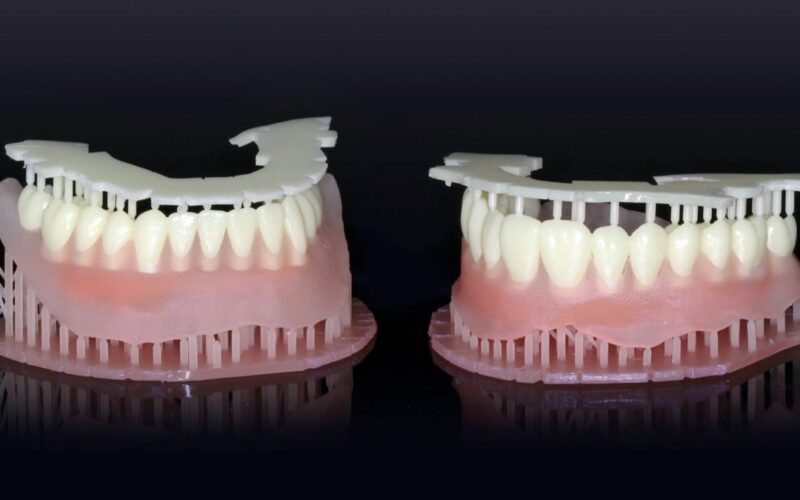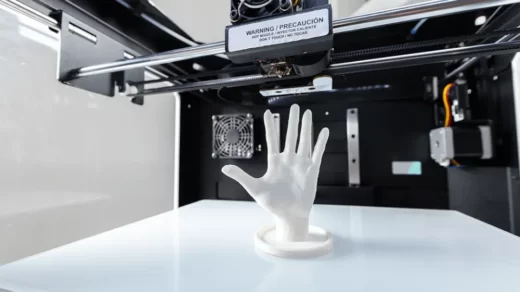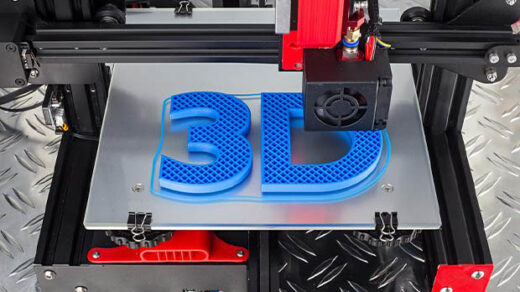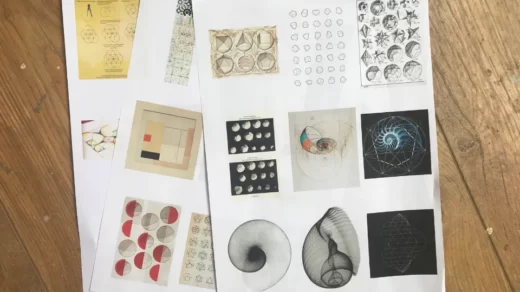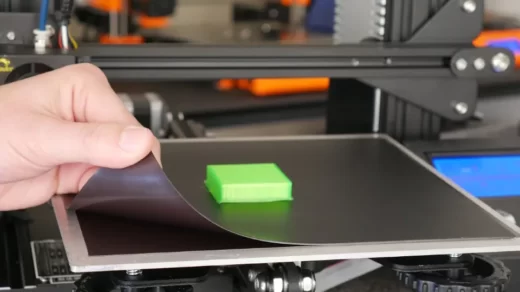One of the exciting developments in manufacturing is 3D printing. In fact, a dentist recently advocated using 3D printing to make dentures.
The benefits of these dentures are clear: They can be made cheaper and easier. However, they have obvious shortcomings in appearance. Clearly, 3D printing could make dentures cheaper. But does it make them better?
Table of Contents
How Do 3D Dentures Work?
During your first visit to our dental practice for a 3D denture-free appointment, our clinical dental technicians will provide you with all the information you need and are ready to answer your questions about digital dentures.
Once you’re ready, our dentist will scan your mouth. Your 3D denture is unique to you. No need for molding, just pure comfort.
Our skilled team will design your dentures, then using a 3D printer, we will print your dentures, polish them, finish them, and arrange your fittings.
We only use the best materials. They are high-impact materials, which means they have the highest strength to prevent breakage.
Digital Impressions are a comfortable way to capture your mouth measurements. Digital scanning eliminates the need for an impression tray, which can be unpleasant for some patients.
For digital impressions, the scan can be paused and restarted as needed if the patient feels uncomfortable.
Are 3D-printed Dentures Better?
3D-printed dentures have the potential to solve many problems. We’re investigating whether they can fit better, be more comfortable, and be cheaper, easier, and faster to produce than traditional dentures. At the same time, these new dentures must be accepted by the wearer.
In a pilot study, we worked with three dental centers equipped with digital scanners for scanning dental impressions and models. We work with them to improve the scanning software and optimize the 3D printing process, then test the results with users. Each participant in the study was given two sets of dentures: one made using traditional methods and one made using 3D printing. Overall, wearers rated both suits about the same, confirming that the new version is acceptable.
Now that we’ve figured out the best way to scan impressions and models and print dentures, we’ll push the technology to larger trials.
Benefits Of 3D-printed Dentures
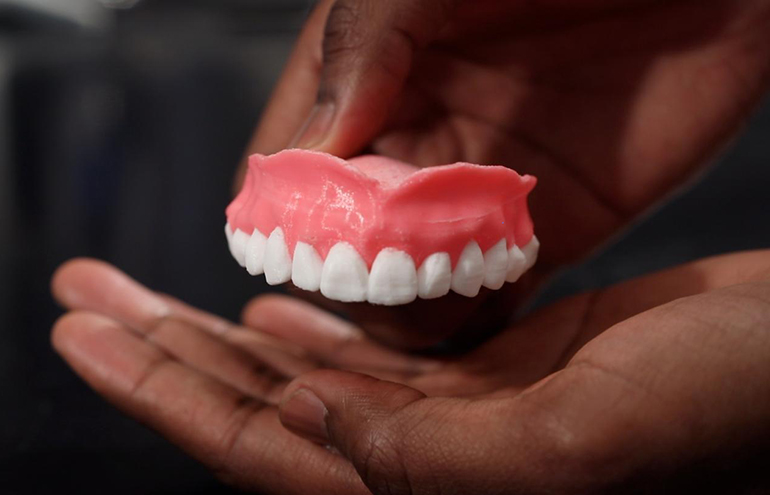
Dentists switching from traditional denture production to 3D printing experience a range of benefits, including:
Cost-effective production: Dental resins are more affordable than traditional denture materials such as acrylic, and 3D printing uses materials more efficiently, reducing waste and saving money. Eliminating manual and manual steps and minimizing 3D post-processing steps with traditional denture production can significantly reduce labor, time, and overall production costs.
Consistent and accurate results: 3D printed dentures are more accurate than traditionally crafted dentures. Compared to traditional methods, digital denture production requires fewer steps and less manual labor, reduces the possibility of variation, and improves accuracy and quality.
Agile Remake: Lab archives digital denture model after production. If the denture doesn’t fit, they can easily adjust it and create a new denture faster than traditional methods. Likewise, if a set of dentures is damaged, a dentist can provide a replacement without having to repeat the entire production process.
Versatile tool: Today’s 3D printed dental solutions go beyond just making dentures. They can also produce guards, mouthguards, crowns, bridges, clear locators, dental models, and more.
What to Look for In a Dental 3D Printer

3D-printed dentures simplify the manufacturing process. A dentist takes a digital oral impression of a patient with an optical scanner. Technicians import the scans into a software program to create digital models of denture bases and bridges, which are then converted into printable models. The technique prints the model removes it from the build plate, rinses off the resin, and removes the support structure before curing. After curing, the denture is quickly polished and ready to use.
The digital denture production process requires more than an accurate 3D printer. High-quality software and materials are also critical. In order to determine the best denture 3D printer, one needs to look at the entire printing solution as a whole.
Consider the following evaluation criteria:
Material Supply
3D printers work best with materials designed to work together. 3D printable resins continue to improve in strength and durability, but if your 3D printer isn’t compatible with the best material, it can result in a sub-optimal product. Handling solutions that are incompatible with third-party materials can also be complicated. Many users prefer to work with suppliers in their home country to avoid international shipping and other complications.
Printed Speed and Accuracy
When comparing printing solutions, check for speed and accuracy. Speed shows the speed of the printer’s production equipment and is critical in determining potential daily output. Printed dentures require high precision as they must fit correctly in the patient’s mouth. Application-specific software can improve the core speed and accuracy specifications of dental 3D printers.
Smooth Printing With Less Post-processing
Excessive post-processing increases the time required for denture fabrication. Some 3D printer models advertise impressive print speeds, however, ignoring the amount of polish needed to make the product work. The 3D printer can print at high speed, with a smooth surface of the denture base, reducing post-processing time and achieving the highest daily denture output.
3D Printing Dental Solutions
3D printing suppliers that are leading innovations in the dental industry are taking a solutions approach – developing dental-specific solutions spanning materials, software, and machines. One solution is to enable leading additive manufacturing companies to 3D print clear aligners that require minimal post-processing, supporting same-day aligners. With the combined advancement of the three pillars of materials, software, and machines, 3D printing will rapidly transform the dental industry.
Could 3D Printing Produce Quality Dentures?
Unfortunately, this is just another example of dentists using technological advancements to make dentures cheaper, rather than trying to make them better. This is the driving force behind traditional dentures. But that’s not necessarily how 3D printing is going in the future.
While the materials currently used to print dentures are weak, this cannot be the case forever. The materials used in 3D printing are constantly improving along with other available materials. In the near future, we should have materials that are strong enough to make dentures.
We don’t have to accept that 3D dentures are all one color. High-tech printing techniques can be used to create dentures, which will not only make them more durable, but also more aesthetically pleasing.
So while current technology produces lower-quality dentures, there is potential to use 3D printing to make better dentures. Who knows, maybe one-day FOY® dentures will be printed.
Conclusion
3D printed dental solutions enable dentists to streamline their workflow for faster, more affordable denture production. However, finding the right solution requires careful evaluation.

